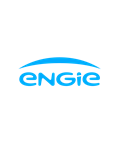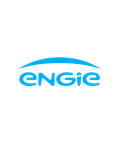In response to profound changes in the energy sector and the growing importance of environmental and societal factors to its stakeholders, ENGIE is taking action by announcing six new non-financial objectives to be achieved by 2020.
These objectives—which replace the previous ones, most of them reached in 2015—will help the Group implement its enterprise project and support its sustainable growth strategy.
Non-financial objectives apply to all of the Group’s activities and to the actions of its employees, who are working to make ENGIE leader of the world energy transition.
They also represent a crucial element for all Group stakeholders, who now assess the results achieved by ENGIE not only on the basis of financial information, but also on the broader environmental and societal context.
With these six new non-financial objectives, ENGIE aims to achieve, by 2020:
1. A customer satisfaction score of 85% among its B-to-C customers;
2. A production portfolio containing 25% renewable energy (1);
3. A 20% reduction in the ratio of CO2 emissions for each source of energy production, as compared with 2012 (2). This objective augments ENGIE’s previous objective and is a result of the Group’s decision, in October 2015, to concentrate solely on low-carbon projects using renewable energy and natural gas, and no longer to launch new coal-based projects;
4. 100% coverage of the Group’s activities by an appropriate mechanism for dialogue and consultation with its stakeholders, based on regular meetings with NGOs and non-profits alongside long-term partnerships related to the Group’s activities;
5. A workforce comprising 25% women (3);
6. A work-related accident frequency rate of less than 3 (4).
This is the first time the Group is publishing objectives related to customer satisfaction and dialogue with stakeholders, demonstrating ENGIE’s desire to best meet the expectations of the entire ecosystem everywhere it is present.
The Group will communicate its progress toward these various objectives in its annual reports.
For the 2(nd) consecutive year, ENGIE has also published its Integrated Report, presenting the Group’s strategy, governance, and performance, as well as the environment in which it operates. This publication, which records the company’s process for creating value over the short, medium, and long term, aims to increase the Group’s transparency to all its stakeholders.
(1)Renewable energy amounted to 18% of the Group’s production capacity mix in 2015.
(2)The ratio of CO2 emissions to energy produced was 443kg CO2eq/MWheq in 2012.
(3)Women made up 22% of ENGIE’s workforce at the end of 2015.
(4)The work-related accident frequency rate was 3.6 in 2015.


